Radiators work by heating the air around them, using convection to create a comfortable living space. Rightly regarded as the more conventional heating solution, radiator systems are known for their quick response times when it comes to warming a room. This makes them ideal for homes with fluctuating temperatures, as they are effective at maintaining consistent heat throughout the day. In addition, radiators tend to have a faster and easier installation process.
On the other hand, underfloor heating provides radiant heat, which creates a pleasant and consistent warmth across the entire floor surface. This system operates at lower temperatures compared to radiators (around 30 to 40 °C), making it a more energy-efficient choice, particularly in well-insulated homes.
Disclaimer: As an Amazon and Wayfair associate, we do receive a small commission from qualifying purchases made via links within this article.
Underfloor heating offers greater control over the temperature settings in your home, allowing you to create a comfortable environment tailored to your preferred temperature. The discreet design of underfloor heating also frees up wall space, giving you more freedom when it comes to interior design.
An Explanation of Underfloor Heating
Underfloor heating (UFH) is a great alternative to traditional radiator systems for keeping your home warm and comfortable. There are two main types, water underfloor heating and electric underfloor heating.
Let's delve into the key differences between these systems and help you understand how they work.
Wet System
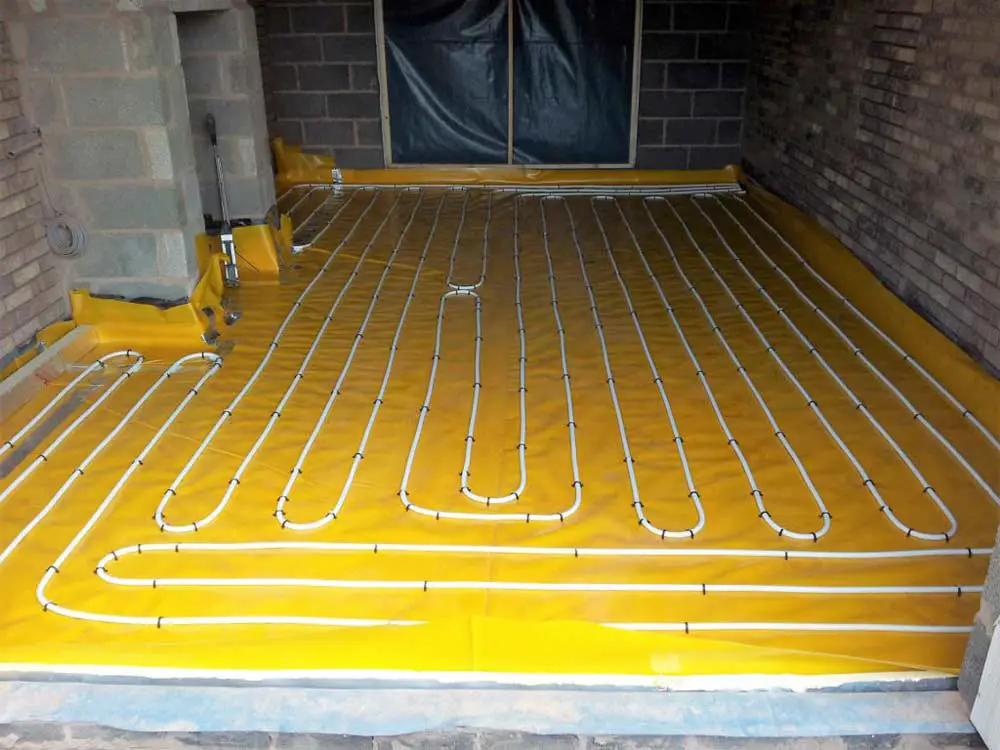
Image credit: puretiling.co.uk
A wet underfloor heating system, also known as water underfloor heating, uses a network of pipes filled with warm water to distribute heat evenly across the floor. This type of system is typically connected to your central heating system and is most commonly installed within a layer of screed, making it ideal for new builds or large renovation projects. The wet system is energy-efficient, offering lower running costs compared to a traditional radiator system.
Advantages of wet systems:
- Lower running costs
- Compatible with various forms of heat source, including gas boilers and heat pumps
- Even heat distribution
- Well-suited for screed UFH installations
Dry System
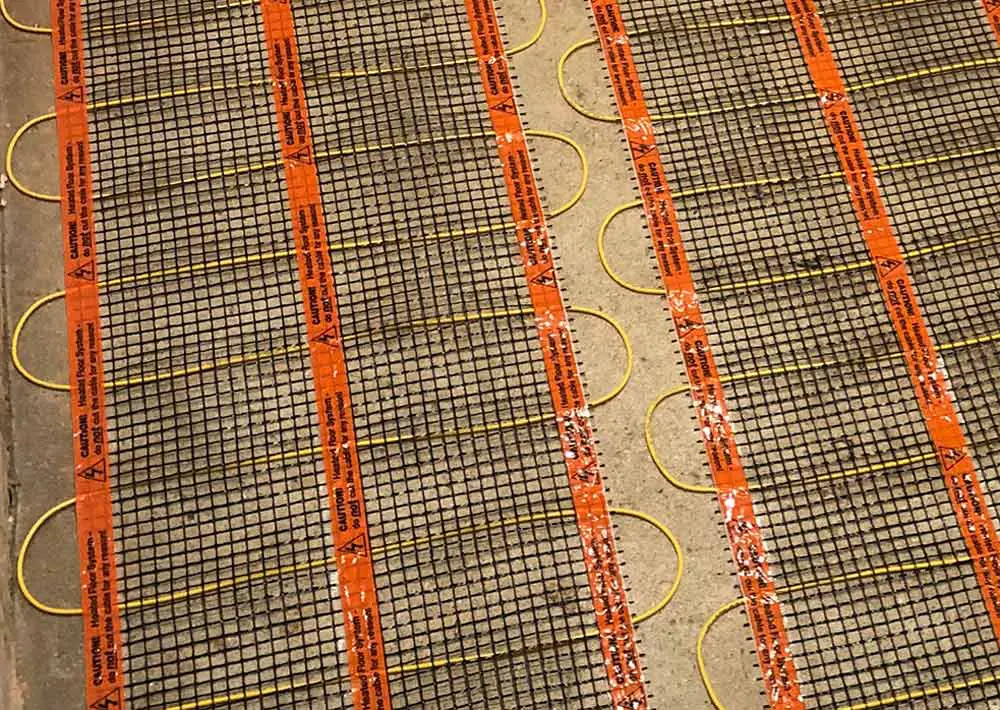
Image credit: cgelectrical-ltd.co.uk
A dry system, also known as electric underfloor heating, utilises a network of electric cables or heating mats to generate heat beneath your flooring. The dry system is easier to install and ideal for smaller projects, such as bathroom renovations or retrofit installations, where you'd like to add UFH to an existing space.
Advantages of dry systems:
- Easier and quicker to install
- Perfect for retrofit projects or smaller areas (such as bathrooms)
- No connection to the main central heating system required
- Compatible with various floor finishes
Whether you choose underfloor heating that utilises a wet or dry system will largely depend on the size of your project, available budget, and installation requirements. Both systems offer distinct advantages and will effectively heat your home, providing a comfortable and pleasant environment.
Radiators Explained
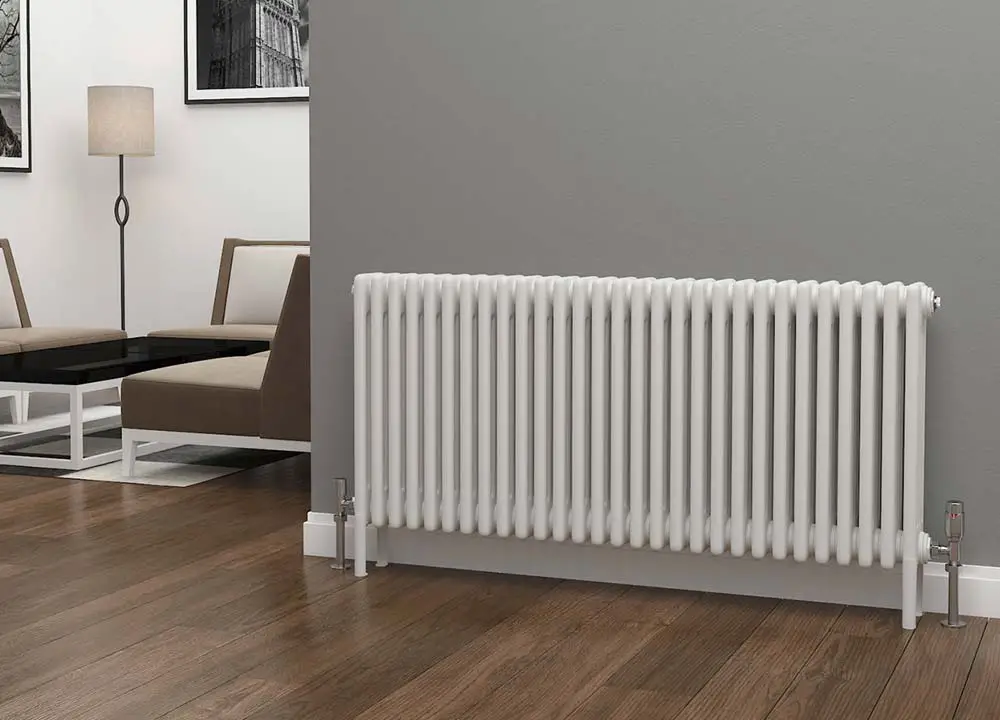
Image credit: tradeplumbing.co.uk
Radiators are a common heat emitter found in homes and buildings, providing warmth through a combination of convection and radiant heat. Let's explore the two main types of heat that radiators utilise to warm your space.
Convection
Convection is the primary method by which radiators transfer heat. In this process, the heated air surrounding the radiator rises while the cool air is drawn in at the bottom. This creates a continuous natural circulation of air, which then spreads the warm air throughout the room. The materials used to construct radiators, such as steel, cast iron, and aluminium, play a significant role in the efficiency of this heat transfer. Each material has unique attributes, such as heat retention and response time.
For instance, aluminium radiators heat up quickly and produce high levels of convection. As a result, they are highly effective in distributing warmth evenly throughout a room. On the other hand, cast iron radiators offer slower heat-up times but retain heat longer, providing a consistent level of warmth even after the heating system has been turned off.
Radiant Heat
In addition to convection, radiators also emit radiant heat. This form of heat transfer occurs when the radiator panels emit energy in the form of infrared rays. These rays travel directly to the objects and people in the room, warming them in the process. Radiant heat is particularly effective in large open spaces, as it can provide targeted heating without relying solely on the natural circulation of air.
Unlike convection, radiant heat is less affected by the material of the radiator. However, the design of individual panels can influence the amount of radiant heat emitted. For example, flat panels emit more radiant heat than curved ones. To maximise the efficiency of both convection and radiant heat, consider the material and design of your radiators when choosing the best one for your needs.
Efficiency
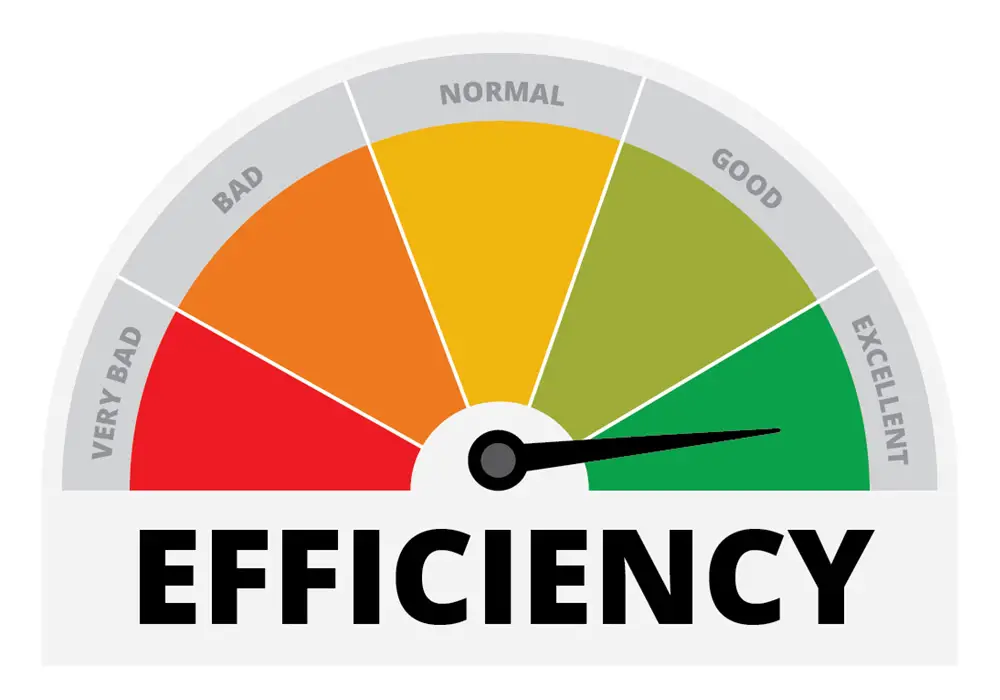
Image credit: laars.com
Temperature Control
When it comes to efficiency, underfloor heating and radiators offer different levels of temperature control. With underfloor heating, you can enjoy a more even distribution of heat throughout the room. This is because it uses radiant heat, ensuring no more cold spots and providing a consistent temperature level for your comfort. Furthermore, underfloor heating operates at lower temperatures compared to radiators, using less energy to achieve the same warmth.
On the other hand, radiators heat your rooms by circulating hot water from your gas boiler through a series of pipes. The heat output can be controlled with a room thermostat, allowing you to adjust it to your desired temperature in each room. A radiator system might heat your room faster, but the heat distribution may not be as even as underfloor heating.
Heat Loss Calculation
To ensure an efficient heating system, you need to calculate the heat losses in your home. Heat loss calculation enables you to estimate the heat output required to maintain a comfortable temperature. This is often measured in BTUs (British Thermal Units).
When calculating heat losses in a room, you need to consider various factors, such as insulation, the size of the room, and the type of windows and doors. A well-insulated room will require a lower heat output, making underfloor heating, especially when paired with a heat pump, the more efficient of the heating solutions.
Radiators, while still requiring heat loss calculations, may be less efficient due to a higher operating temperature and a more uneven heat distribution. This means that radiators might need a higher heat output to reach the same level of comfort, leading to increased energy usage compared to underfloor heating.
Installation
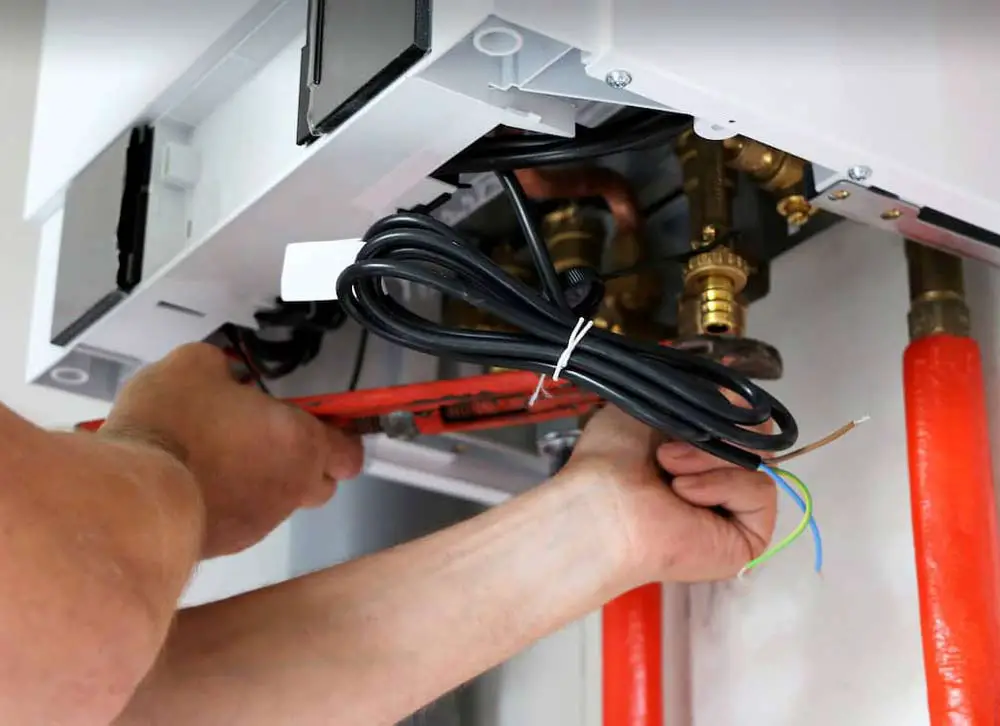
Image credit: mybuilder.com
New Build vs Retrofit
When it comes to installing a heating system in your home, the choice between whether you install underfloor heating or radiators may depend on whether it's a new build or a retrofit project. In a new build, the installation process for both options can be relatively straightforward, as you can plan the design and layout before construction begins. Underfloor heating can be more efficient in a well-insulated new build, providing an even spread of warmth.
For a retrofit project, installing underfloor heating can be more challenging, as it involves removing the existing flooring to lay the pipes or wires and then reapplying the flooring over the top again. This could result in a higher initial cost compared to simply replacing radiators. However, it's worth considering the long-term efficiency benefits and comfortable living conditions that underfloor heating can provide.
Professional Heating Engineer
Whether you're installing underfloor heating or radiators, it's essential to enlist the help of a professional heating engineer to ensure the job is done correctly, efficiently, and safely.
A skilled heating engineer will assess your property and advise on the best system to cater to your needs and budget. They will also handle any potential issues that might arise during the installation process. As the efficiency of both systems largely depends on proper installation, working with a reputable professional is key to getting the most out of your heating system.
When planning a self-build project, it's still important to consult with a heating engineer during the design phase. Their expertise will help you select the most suitable heating option for your home and ensure that it's integrated seamlessly into your construction plans. Additionally, hiring a professional heating engineer can help you navigate any building regulations and ensure the system is compliant.
Cost Analysis
Running Costs
When considering the running costs of underfloor heating (UFH) and radiators, it is important to think about your home's insulation and heat distribution requirements. UFH is generally more energy-efficient, particularly when paired with a heat pump, thanks to its lower flow temperature and even spread of warmth.
By maintaining a consistent temperature, UFH systems can save you money on your energy bills in the long run. However, remember that the efficiency of your UFH system will depend on factors like the type of flooring used, insulation levels, and heat loss in your home.
Radiators, on the other hand, tend to consume more energy due to their higher water temperature requirements and uneven distribution of heat. Although they still provide a comfortable living environment, radiators may lead to increased energy bills compared to UFH systems. It's also essential to maintain your radiators regularly, including bleeding and balancing, to maximise their efficiency and reduce running costs.
Installation Costs
In most cases, UFH systems come at a higher purchasing cost and are more expensive to install than radiators. For example, the average cost to install water underfloor heating in a 10m² area is estimated at £1,200. Your installation cost will also depend on factors like the size of your home, its age, and the number of rooms receiving UFH. Keep in mind that installation may also require additional expenses for floor preparation and insulation upgrades.
Radiators, in comparison, are typically quicker and easier to install, resulting in lower installation costs. They can be a more suitable choice if you're working with a tighter budget or looking for a more straightforward heating system installation. The overall cost of installing radiators will also vary depending on the number and type of radiators you choose, as well as the complexity of your existing pipework.
Comfort & Practicality
Floor Finish
Underfloor heating systems provide consistent warmth, ensuring a comfortable experience throughout the room. One consideration when choosing a heating system is the type of floor finish you have in your home. Underfloor heating is compatible with a variety of floor finishes, such as tiles, laminate, or engineered wood, which can enhance its efficiency and comfort. Tiles, for example, are excellent conductors of heat, making them particularly suited for use with underfloor heating systems.
On the other hand, radiators usually work well with any floor finish. However, their effectiveness may be slightly reduced if you have a highly insulated floor or a room with high ceilings.
Room Size
The size of the room is another critical factor when choosing between radiators and underfloor heating. For large rooms with a significant surface area, underfloor heating is often more efficient and comfortable due to its even distribution of heat. Underfloor heating maintains a constant temperature throughout the room, addressing issues like cold spots and natural humidity more effectively than radiators.
Radiators are more suitable for smaller rooms, as they heat the space quickly and efficiently. If you have limited wall or floor space, radiators can also be more practical, allowing for more flexibility in furniture layout and room design.
Design & Aesthetics
When comparing radiators and underfloor heating for design and aesthetics, some notable differences can affect your interior design and decorating choices.
Wall Space
Radiators, especially designer radiators, can become an integral part of your room's decor. They come in various shapes, sizes, and styles, allowing you to personalise your space even further. However, they do invariably take up a certain amount of wall space, which can limit your options when it comes to furniture arrangement, artwork, or other decorative elements.
On the other hand, underfloor heating allows you to maximise your wall space, as it's hidden beneath your floor. This can provide you with more flexibility when it comes to interior design and decorating your rooms. With underfloor heating, you gain the freedom to experiment with furniture placement, choose larger artwork, or create a minimalist look without any obstruction on the walls.
Environmental Impact
When comparing radiators and underfloor heating systems, it's essential to consider each one's environmental impact. Let's look into how energy efficiency, renewable energy, and heat pump technology come into play for both options.
Underfloor heating systems are generally known to be more energy-efficient than traditional radiators. They use between 15-40% less energy due to their larger distribution area for heat. This means that underfloor heating requires a lower flow temperature to warm up a room, contributing to a reduced environmental footprint.
Using renewable energy sources can help enhance the eco-friendliness of underfloor heating systems. For instance, pairing underfloor heating with air-source heat pumps could be an effective renewable system that significantly decreases the energy consumption and the environmental impact of your home.
The Centre for Sustainable Energy also highlights that well-insulated properties with underfloor heating can potentially eliminate running costs at certain times, further improving their green credentials.
On the other hand, radiators are not as energy-efficient due to their smaller surface area for heat distribution. However, advancements in radiator technology have made them more environmentally friendly over time. For example, modern radiators are often designed to work with lower water temperatures, leading to reduced energy consumption.
Frequently Asked Questions
What are the costs of underfloor heating vs radiators?
The costs of underfloor heating and radiators vary depending on various factors, such as the size of your home, the type of system (wet underfloor heating system or electric underfloor heating system), and your choice of flooring.
Generally, underfloor heating can be more expensive to install than radiators due to the complexity and labour involved. However, once installed, underfloor heating can deliver lower energy bills, especially when paired with a heat pump, making it more efficient in the long run.
Which is more energy efficient: radiators or underfloor heating?
Underfloor heating is considered more energy efficient than radiators because it operates with lower flow temperatures, distributing heat evenly across the floor. This even spread of warmth means less energy is required to heat a room, helping to lower your heating bills. If your home is well insulated, an underfloor heating system is more likely to provide better energy efficiency than traditional radiators.
How do the installation processes for radiators and underfloor heating compare?
When it comes to installation, radiators have an advantage due to their simpler and quicker installation process. Installing underfloor heating can be more complex and time-consuming, particularly in cases where the floor needs to be excavated or existing surfaces need to be replaced. While renovating or building a new property, it's usually more straightforward to incorporate an underfloor heating system during the construction phase.
What are the main advantages and disadvantages of each system?
Underfloor heating provides a range of benefits, such as a more even distribution of warmth, lower flow temperatures, improved energy efficiency, and minimal visual impact as it's hidden under the floor. However, it can be more expensive to install and retrofitting an existing property can be problematic without significant work.
Radiators, on the other hand, are generally cheaper to install and offer greater flexibility in terms of location and design. They can heat up more quickly, but they rely on convection, which can lead to uneven room temperatures and might not be suitable for allergy sufferers due to potential dust circulation.
Can Underfloor heating replace radiators?
Yes, it is possible to replace radiators with underfloor heating but keep in mind that the process might involve significant work, such as excavating or replacing floors, and may incur higher costs. It's important to consult a heating professional to evaluate the feasibility of such a change and ensure that the new system can be effectively integrated into your property.
How do the comfort levels of underfloor heating and radiators differ?
When it comes to comparing the comfort levels of underfloor heating vs radiators, underfloor heating tends to provide a more even and comfortable warmth to a space, as it radiates heat from the floor upwards, eliminating cold spots and draughts. This leads to a more stable room temperature without large fluctuations.
Radiators, on the other hand, rely on convection to distribute heat. While this can result in a quicker warm-up, it can also cause heat to concentrate at the top of a room, leading to less consistent temperatures and possible discomfort.




 Author: Matthew Chiappini
Author: Matthew Chiappini